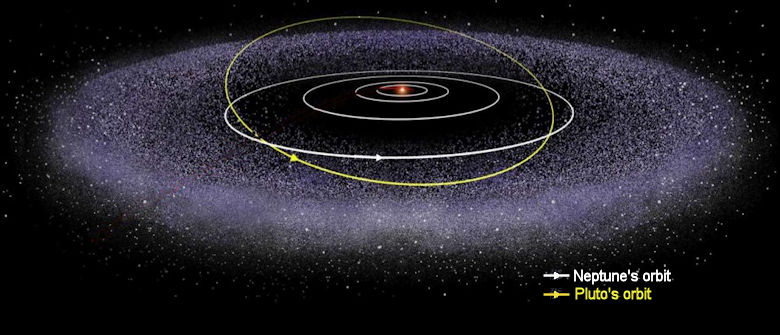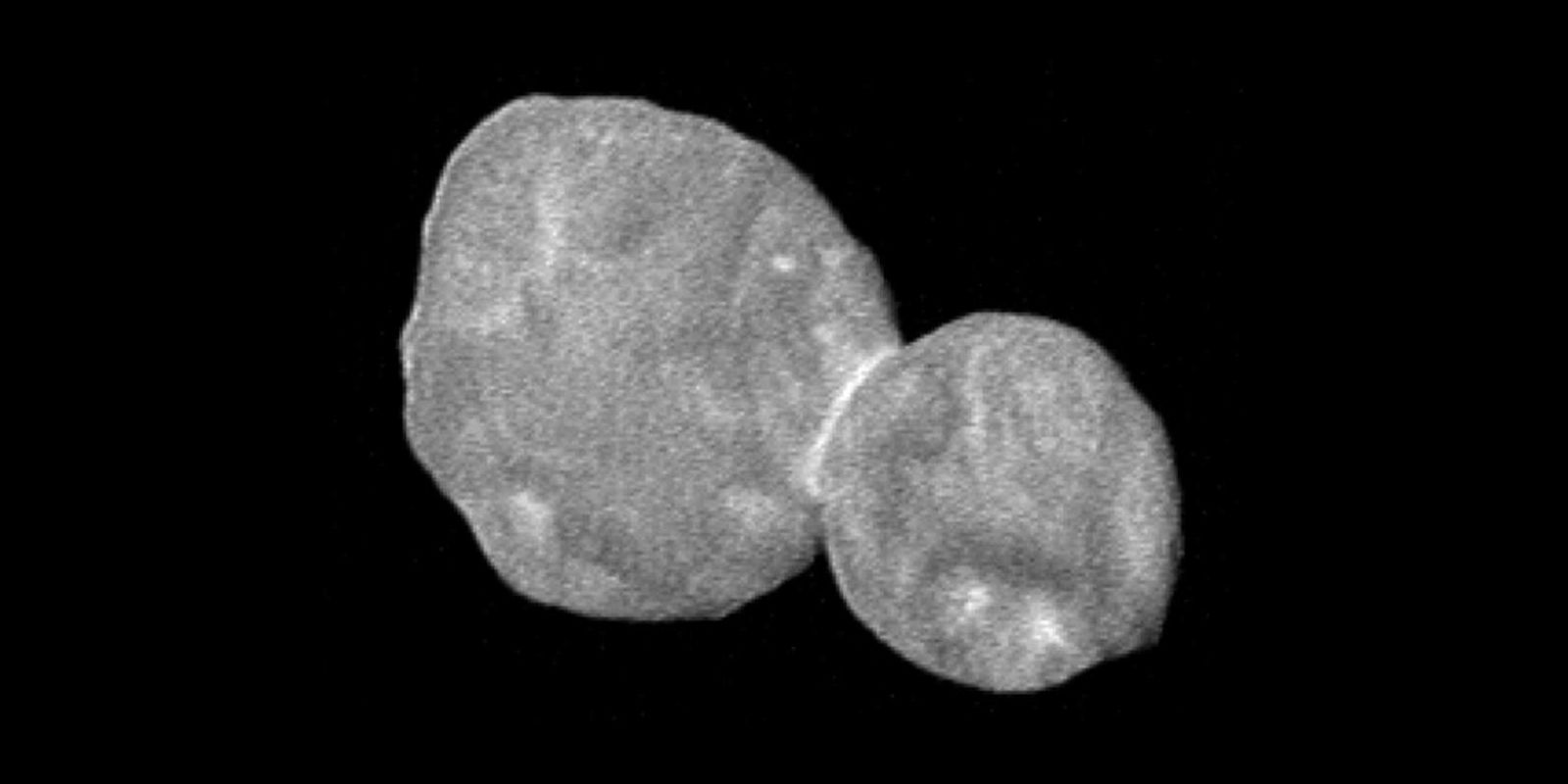Kuiper Belt
|
There is a torus (donut-shaped) region in the outer solar system beyond the disk of planets
which contains more than 100,000 large icy bodies.
It is known as the Kuiper Belt.

The range of the belt extends from Neptune's orbit to roughly twice that distance from the sun. The chemical composition is thought to be rather pristine, which is to say that it has changed very little since its formation billions of years ago, thus preserving information about the inception of the solar system itself. It is difficult to measure chemical composition precisely at such great distance, but along with the rocky material the major constituents in the region appear to be water ice, methane, ammonia, nitrogen, carbon monoxide and carbon dioxide. The New Horizons spacecraft took photos of Pluto during a fly-by in July 2015, and then continued into the Kuiper Belt to encounter another trans-neptunian object, known commonly as Ultima Thule, in January 2019.  Ultima Thule (KBO 2014-MU69), source: JPL-NASA |
